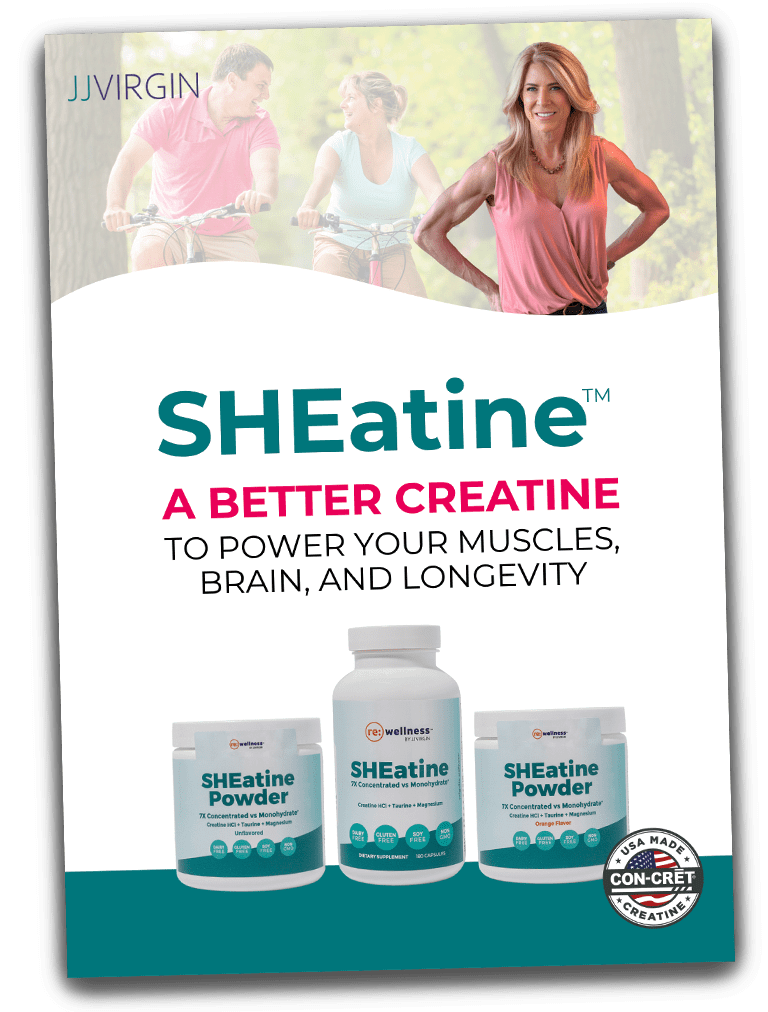Nearly everything, including optimizing metabolism and helping your immune system fight viruses and other invaders, depends on amino acids.
Amino acids are the molecular architects of life. Think of them as Legos, snapping together to create unique structures. Amino acids also work like letters of the alphabet, each coming together to form specific words. Every amino acid serves a specific function.
These tiny powerhouses help perform countless tasks, including chemical reactions, communication between cells, and numerous other processes that support and sustain life.
What Are Amino Acids?
Imagine that you’ve just eaten a grass-fed steak or had a loaded smoothie. Your body breaks down that protein you’ve consumed into 20 amino acids (categorized into essential and non-essential), each with a specific role.
Those roles include transporting and storing nutrients, which supports various bodily functions. In addition to this, they have a significant impact on your immune system, fortifying your body’s defenses against illnesses. Amino acids also contribute to the repair and healing of wounds, ensuring your body’s ability to recover effectively. Collagen, a vital protein forming the structural basis of skin and connective tissues, relies on amino acids like proline and glycine for its formation.
Amino acids also help build, regulate, and support cells, tissues, enzymes, and antibodies; and form the building blocks of hormones, neurotransmitters, and neuropeptides. Tyrosine is a precursor to dopamine, which contributes to memory, learning, and decision-making. Tryptophan, on the other hand, helps make your feel-good neurotransmitter serotonin.
It’s clear that amino acids are critical for optimal health, but let’s dive deeper into how you can make the most of them in your diet.
Why Is Meeting Your Amino Acid Quota So Important?
Without amino acids, your body cannot optimally perform these and many other functions. Consider leucine: research shows that consistently low amounts of this amino acid can lead to fatigue, poor growth and development, unhealthy weight loss, skin rashes, and hair loss. In a desperate move, your body might break down muscle to give essential leucine to critical organs like your brain, liver, kidneys, and heart.1
That’s why I take a protein-first approach to every meal. Unlike carbohydrates and fat, the body cannot store amino acids. This means you need a regular supply to keep things running efficiently, and you’ve got to get them through food and supplements.

Out of the hundreds of amino acids out there, our body relies on 20 to build its proteins. These are split into two groups:
- Essential Amino Acids (EAAs): These are the VIPs that your body can’t create on its own. You need to get them from your meals or supplements.
- Non-Essential Amino Acids: These are like the in-house team—your body can produce them. However, there’s a twist: some of these non-essential amino acids can turn essential when the going gets tough. For instance, glutamine, which is usually non-essential, becomes a must-have when you’re sick or under chronic stress.2
Specific amino acids also carry unique therapeutic benefits, making them ideal for standalone use. Glutamine can support gut health, arginine may improve blood flow and cardiovascular health, and lysine can suppress the herpes simplex virus. These are just a few examples of the diverse roles amino acids can play in keeping you healthy.
When you’re not getting optimal protein intake, your body can break down precious muscle to get those critical amino acids for proper functioning. That’s a big no-no, consider that after 30, you’re already losing 3-8% of your muscle every decade.3
Proper amino-acid intake gives your muscles the best defense against the march of time.
Complete Protein vs. Free-Form Amino Acids
When it comes to getting your essential amino acids, there are two pathways you can take.
One route involves consuming foods rich in complete proteins, which offer all nine essential amino acids your body requires. Whether you’re savoring a mouthwatering grass-fed steak or sipping on my All-In-One Shake, these protein sources deliver amino acids as a package deal. However, your body needs to break down this protein bundle into individual amino acids through digestion.
On the other hand, you can opt for free-form amino-acid supplements to directly access those crucial building blocks. Unlike the amino acids found in traditional protein sources, free-form amino acids aren’t linked together in complex chains. This means they don’t need the digestion process, which can sometimes slow down the delivery of nutrients to your muscles and tissues.
Free-form amino acids are rapidly absorbed into your bloodstream, which allows your body to easily access them. Studies show that compared with whole proteins, free amino acids lead to more rapid absorption and greater availability in the bloodstream.4
Free-form amino acids are available in powdered form or capsules. These supplements provide isolated amino acids in their pure form, allowing for targeted supplementation of amino acids for specific health goals or to address certain deficiencies. A free-form amino acid supplement should provide all nine essential amino acids and, where relevant, conditionally essential amino acids.
A superior one will contain high amounts of leucine. Newer research shows that this amino acid is mission-critical for muscle protein synthesis, growth, and recovery. Low amounts of leucine may be why plant-based proteins lack the muscle-building impact seen in leucine-rich animal proteins.5
BCAAs to Support Muscle Growth and Recovery
Another category of free-form amino acids that packs a punch in supporting muscles is known as branched-chain amino acids (BCAAs). Unlike the regular free-form amino acids, BCAAs come with a unique structure that gives them distinct muscle-boosting qualities.
The three amino acids classified as BCAAs—leucine, isoleucine, and valine—account for 35% of the EAAs in muscle protein.6
These amino acids play pivotal roles in promoting muscle well-being:
- Growth and maintenance: BCAAs actively support the growth and maintenance of muscle tissue, making them essential allies in building strength and resilience.
- Reduce muscle breakdown: During intense exercise, BCAAs step in to reduce the breakdown of muscle, preserving your hard-earned gains and supporting endurance.
- Post-workout recovery: BCAAs play a crucial role in helping your body recover, making those aching muscles feel less sore and ready for the next challenge.7
- Reduce delayed-onset muscle soreness: BCAAs help make the days after an intense workout more manageable.8
BCAAs aren’t just for muscle building—they’re also an ideal energy source during intense workouts like strength training or high-intensity interval training (HIIT). By sparing muscle glycogen (your stored blood sugar) and staving off fatigue, BCAAs become your go-to partners for pushing your limits.
You can use BCAAs before, during, or after workouts to support muscle building and recovery.
As with other free-form amino acids, BCAA supplements are quickly absorbed and utilized by the body, especially during periods of intense training or when protein intake might be limited.
Why Should I Choose A Free-Form Amino Acid Supplement?
Getting enough protein is critical for so many things: repairing and building tissues, making enzymes and hormones, supporting a strong immune system, and aiding in muscle development and maintenance. Because you get full faster, protein helps you reach your goal weight faster.
However, life’s factors, like aging, might slow down the process of breaking down proteins. Free-form amino acids provide support for people who have trouble breaking down complete protein or who want the other therapeutic benefits of amino acids.
Because amino acids in their free form are immediately available for absorption, your body can use them much more readily and rapidly than the amino acids embedded within dietary protein. In fact, many demographics benefit from taking a free-form amino acid, including:
- Those who want to improve exercise performance
- Strength trainers who want to build and protect muscle mass
- People who have trouble digesting optimal amounts of complete protein
- People recovering from physical trauma and surgery
- Anyone desiring a quick, efficient fuel source in the form of amino acids
As building blocks of proteins, free-form amino acids are readily absorbed and utilized by the body to support muscle repair, enhance athletic performance, support recovery, and provide critical amino acids in their most available form. With that in mind, I’ve designed a comprehensive, cutting-edge amino acid supplement to meet your needs.
Amino Power Powder is a free-form amino-acid powder unlike any other on the market. It goes above and beyond traditional essential amino-acid formula to provide:
- All nine essential amino acids in therapeutic amounts.
- 2.5 grams of the BCAA leucine in every serving for optimal muscle support and recovery. Leucine is critical for protein synthesis, preventing muscle breakdown, energy metabolism, and more.9
- The conditionally essential amino acid arginine, which plays an important role in trauma recovery, growth and development, immune function, and more.
- Alpha-ketoglutarate and vitamin B6 for superior amino-acid absorption and bioavailability.
Amino Power has a delicious fruit-punch flavor that mixes easily into your favorite liquid, is sweetened with stevia, with zero grams of sugar.* Try Amino Power Powder here.
References:
- Lacey JM, Wilmore DW. Is glutamine a conditionally essential amino acid? Nutr Rev. 1990 Aug;48(8):297-309. doi: 10.1111/j.1753-4887.1990.tb02967.x. PMID: 2080048.
- Volpi E, Nazemi R, Fujita S. Muscle tissue changes with aging. Curr Opin Clin Nutr Metab Care. 2004 Jul;7(4):405-10. doi: 10.1097/01.mco.0000134362.76653.b2. PMID: 15192443; PMCID: PMC2804956.
- Weijzen MEG, van Gassel RJJ, Kouw IWK, Trommelen J, Gorissen SHM, van Kranenburg J, Goessens JPB, van de Poll MCG, Verdijk LB, van Loon LJC. Ingestion of Free Amino Acids Compared with an Equivalent Amount of Intact Protein Results in More Rapid Amino Acid Absorption and Greater Postprandial Plasma Amino Acid Availability Without Affecting Muscle Protein Synthesis Rates in Young Adults in a Double-Blind Randomized Trial. J Nutr. 2022 Jan 11;152(1):59-67. doi: 10.1093/jn/nxab305. PMID: 34642762; PMCID: PMC8754581.
- Ben Greenfield Life: The Secret Darling Of The Nutrition Supplements Industry & Why Ben Greenfield Has Changed His Mind On Amino Acids: Myths, Deception & Truth Of BCAAs vs. EAAs.
- Shimomura Y, Murakami T, Nakai N, Nagasaki M, Harris RA. Exercise promotes BCAA catabolism: effects of BCAA supplementation on skeletal muscle during exercise. J Nutr. 2004 Jun;134(6 Suppl):1583S-1587S. doi: 10.1093/jn/134.6.1583S. PMID: 15173434.
- Arroyo-Cerezo A, Cerrillo I, Ortega Á, Fernández-Pachón MS. Intake of branched chain amino acids favors post-exercise muscle recovery and may improve muscle function: optimal dosage regimens and consumption conditions. J Sports Med Phys Fitness. 2021 Nov;61(11):1478-1489. doi: 10.23736/S0022-4707.21.11843-2. Epub 2021 Feb 15. PMID: 33586928.
- Weber MG, Dias SS, de Angelis TR, Fernandes EV, Bernardes AG, Milanez VF, Jussiani EI, de Paula Ramos S. The use of BCAA to decrease delayed-onset muscle soreness after a single bout of exercise: a systematic review and meta-analysis. Amino Acids. 2021 Nov;53(11):1663-1678. doi: 10.1007/s00726-021-03089-2. Epub 2021 Oct 20. PMID: 34669012.
- Duan Y, Li F, Li Y, Tang Y, Kong X, Feng Z, Anthony TG, Watford M, Hou Y, Wu G, Yin Y. The role of leucine and its metabolites in protein and energy metabolism. Amino Acids. 2016 Jan;48(1):41-51. doi: 10.1007/s00726-015-2067-1. Epub 2015 Aug 9. PMID: 26255285.
*These statements have not been evaluated by the Food & Drug Administration. Products mentioned are not intended to diagnose, treat, cure, or prevent any disease. The views in this blog by JJ Virgin should never be used as a substitute for professional medical advice. Please work with a healthcare practitioner concerning any medical problem or concern.




